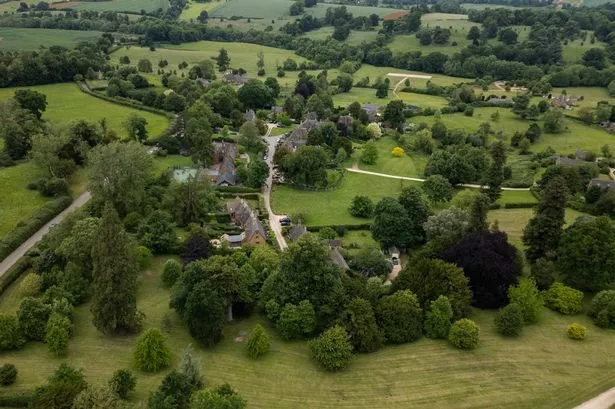This Cotswolds village stands apart from its popular neighbours with distinctly red-hued cottages and some impressive former locals including great writers and thinkers
Sitting on the edge of the Cotswolds is a village not as traditional as its neighbours. The ‘picture postcard’ destination is defined by cottages in a different shade but just as charming and impressive.
Great Tew is located five miles east of Chipping Norton in Oxfordshire. The village overlooks the Worton Valley from a limestone ridge, offering a distinct perspective on the well-trodden UK holiday destination that is the Cotswolds.
One thing that distinguishes Great Tew from other Cotswolds villages is the predominant stone used in the construction of local cottages. While the yellow Cotswold stone has become synonymous with the region, Great Tew cottages boast a different style.
In this part of the region, ironstone dominates and has a much darker red hue. Furthermore, the cottages in Great Tew are thatched, which is not a particularly common feature in the Cotswolds.
READ MORE: Beautiful little UK seaside village looks like it could be in the Cotswolds
There is evidence that people lived in the landscape of Great Tew in pre-Roman times but the first sign of habitation is during the Roman occupation in the 3rd and 4th centuries. During the Saxon period, Great Tew acquired the name Ciric Tiwa, or Church Tew.
At one point, the famed Great Tew Estate was inherited by Lucius Carey, Second Viscount Falkland, during which time it gained notoriety because of the ‘Great Tew Circle’ of writers and scholars who often met for political and theological debates.
In 1914, the Great Tew Estate was held in public trusteeship for almost fifty years, during which time very little was done to maintain the Estate or its buildings. In 1962 Major Eustace Robb inherited the estate and immediately set about a gradual programme of improvements that made the village prosper and laid the foundations for its future health.
Farms were reclaimed, cottages were refurbished and a sewage system for the village was installed under Major Robb. Today, the Great Tew Estate belongs to the Johnston family who are just as committed to the village’s prosperity.
While Great Tew is an example of a thriving Cotswold village, it stands in slight contrast to its popular neighbours that are struggling under the weight of overtourism.
Bibury – often called the ‘Capital of the Cotswolds’ – sees thousands of tourists visit from across the world annually. Plans for a new car and coach park were withdrawn in the area earlier this year to deter more tourists from visiting.
Locals have grown increasingly unnerved by the massive tourist crowds descending on the area. To address the problem of overtourism, residents have formed a working group that includes councillors and police. Gloucestershire County Council has also announced plans to tackle overtourism in the village.
In 2025, reports emerged that coaches could soon be banned from stopping and parking in the village. Longer-term recommendations from the working group also include improving signs to direct coaches away from the village’s narrow lanes.
